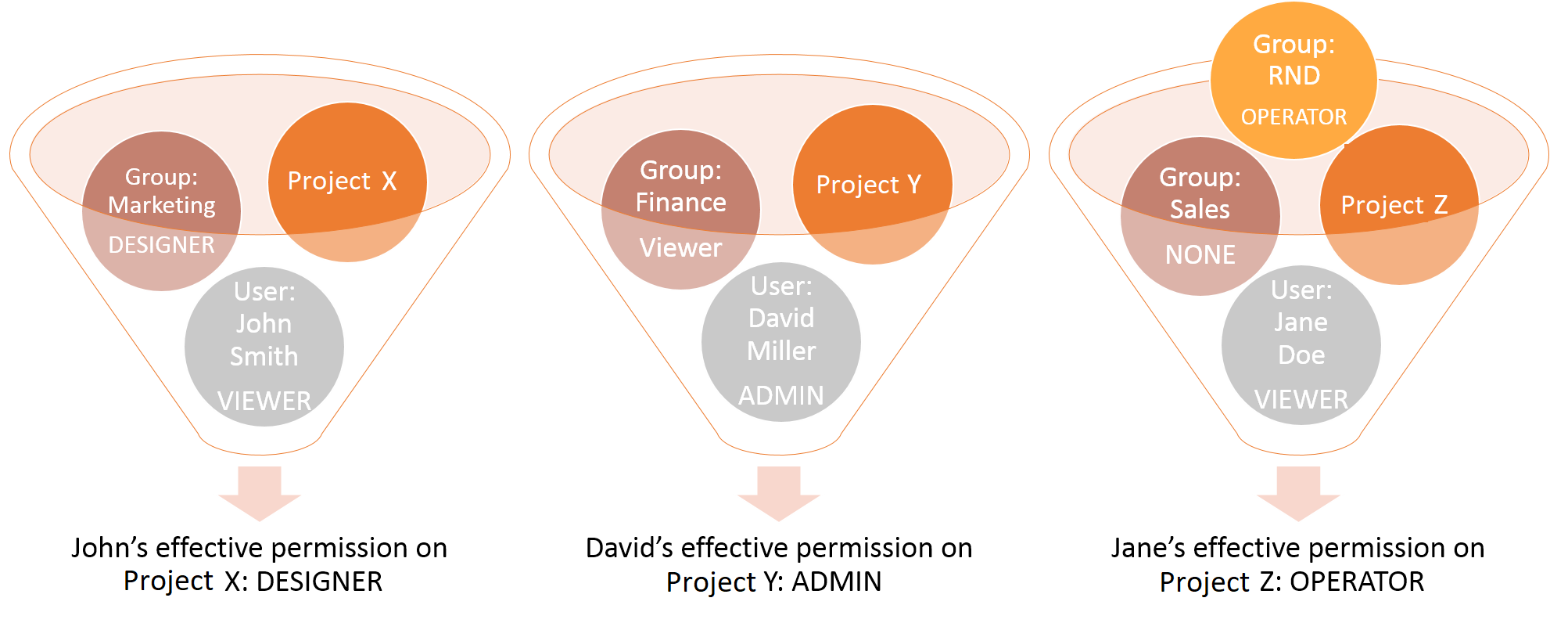Inheritance and overrides
Group permission may contradict the permission that a particular user was granted. In this case, the higher permission overrides the lower permission, as illustrated in the following figure:

Effective permissions are the permissions that take effect when a user is part of more than one group, or when there is a conflict between the user's permission and the group's permission, or in the hierarchy.
By default, the permission of a user or group object is inherited from the access control list (ACL) of the object's parent. However, a lower or higher permission may override this permission. In this case, the overriding higher permission is the effective permission for the object, stopping inheritance from the parent. As a result, any changes to the parent no longer affect this user or group.
In the User Permissions window, inheritance is indicated by a check mark in the Inherited column. By default, inheritance is enabled for all users and groups on any level. Changing permissions by using the slider automatically stops inheritance for the selected user or group. Qlik Compose also lets you disable inheritance by disconnecting the entire authorization level from the parent level. For information on how to do this, see Managing user permissions.
